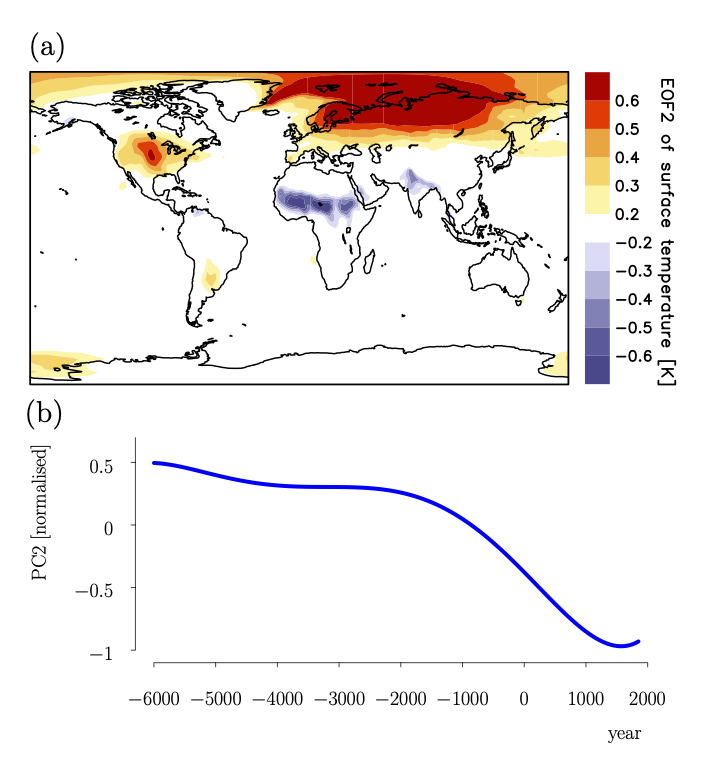Global temperature modes shed light on the Holocene temperature conundrum
One temperature reconstruction, mainly based on ocean sediments, shows warm conditions in the early to mid-Holocene followed by a cooling trend to the late Holocene. The other reconstruction based on pollen data, however, reveals global warming until around the beginning of the common era. In a new study published recently in Nature Communications Dr Jürgen Bader, scientist in the department “The Land in the Earth System” at Max Planck Institute for Meteorology (MPI-M) and his colleagues show that they are able to reconcile the seemingly conflicting views by using climate modeling.
The authors can demonstrate that both a global warming mode and a cooling mode emerge when performing a spatio-temporal analysis of simulated annual temperature variability during the Holocene. The warming mode is mainly related to the combined effect of a small, but significant increase in greenhouse gases by some 20 ppm and the latitude-dependent trend in annual mean insolation caused by subtle changes in the Earth orbit around the sun. The warming mode is most pronounced in the tropics. The simulated cooling mode - resembling the global cooling trend shown by one reconstruction - is determined by changes in the seasonal cycle of Arctic sea-ice that are forced by orbital variations and volcanic eruptions. This mode predominantly affects the Arctic, North Atlantic and Eurasian regions. The warming mode dominates in the mid-Holocene, whereas the cooling mode takes over in the late Holocene. Moreover, the weighted sum of the two modes yields the simulated global temperature trend evolution during the Holocene. Experiments with different external forcing factors show a substantial effect of higher frequency variability of the external forcing - like volcanoes - on the trend development of the global mean temperature by integration of these effects.
The findings provide valuable guidance for the interpretation of geological records, which are used to estimate past climate changes, and which, in turn, help understanding the environmental changes in which human civilizations developed.

Original publication:
Bader, J. J. Jungclaus, N. Krivova, S. Lorenz, A. Maycock, T. Raddatz, H. Schmidt, M. Toohey, C.-J. Wu and M. Claussen (2020) Global temperature modes shed light on the Holocene temperature conundrum. Nature Communications 11, 4726. https://doi.org/10.1038/s41467-020-18478-6
Contact:
Dr Jürgen Bader
Max Planck Institute for Meteorology
Email: juergen.bader@mpimet.mpg.de
Dr Johann Jungclaus
Max Planck Institute for Meteorology
Email: johann.jungclaus@mpimet.mpg.de
